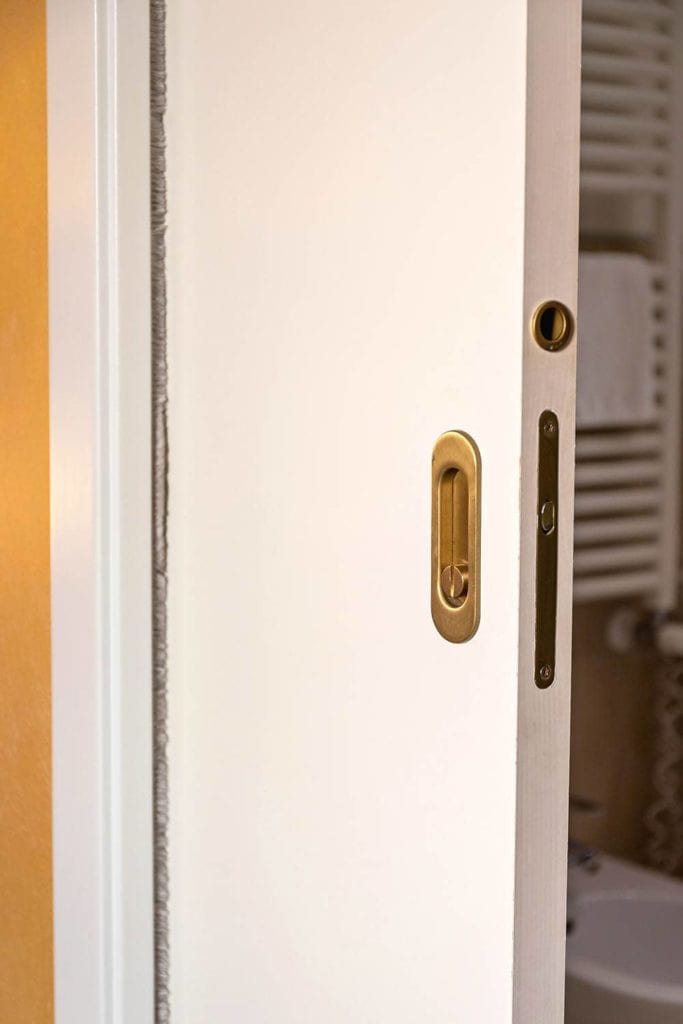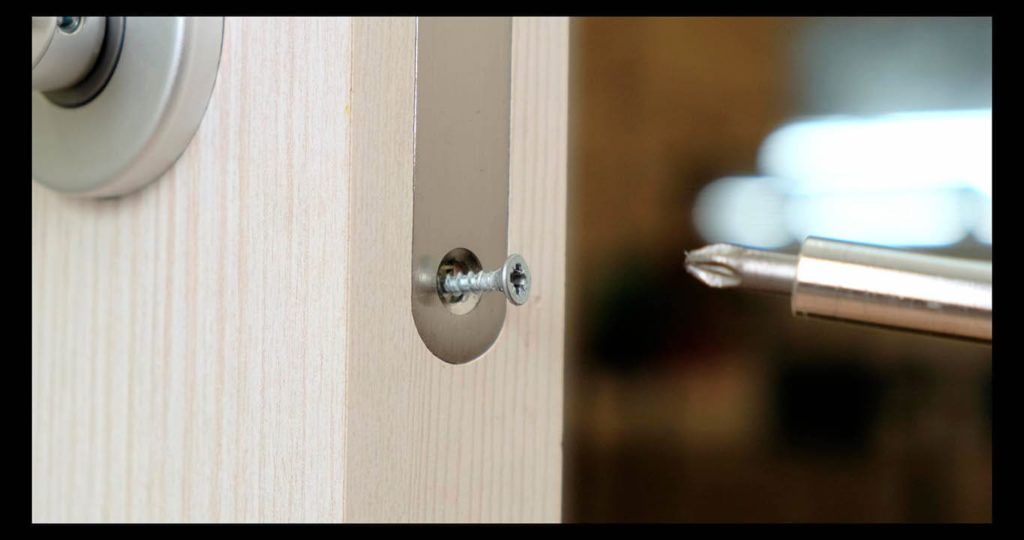How to Fix a Pocket Door (14 Simple Steps)
-

- Last updated:


A pocket door is an excellent option if you are short on space but want the benefits of closing off a room. Slide it over, and voilà, you have some welcome privacy. They are typically something you’d see in an older home because of their popularity during the 19th century. A well-maintained and varnished door is an attractive feature, especially with ornate wood.
While pocket doors usually don’t lock, that is easily remedied with a simple hook and eye latch or a sliding bolt. On the downside, some are noisy. House settling may affect their performance. The wood may change or warp over time, causing other problems affecting its usability. Our guide will walk you through some of the common repairs and the more extensive solutions.
Before You Start
Hopefully, you’ll find that it’s an easy fix. Some causes of a faulty pocket door are simple repairs that anyone can do. That’s looking at the bright side. The other side of the coin is not pretty, especially if you have to replace the entire structure or even just the tracks. It requires some power tools, such as a miter saw and a circular saw.
It’s not the easiest of DIY projects, either. It’s involved with a need for precision. The clearance between the bottom of the pocket door and the floor is only about ¼” to be functional. If you’re comfortable with woodworking projects, read on to learn more of what’s involved before you start.
How to Fix a Pocket Door (14 Steps)
1. Figure Out What Kind of Pocket Door You Have
Pocket doors come in two main styles, either top-hung or a floor-track model. The former is more common, while the latter is typically something you’d see in older homes. A look up and down will tell you where you need to focus your attention.

2. Check the Rollers
This one is our first of two easy fixes. Grab a flashlight and inspect their position on the track. Sometimes, the roller may slip out, causing the door to fight you when you want to open or close it. If one or more is out of place, you can simply pop it back into the track carefully. Don’t fight it if it doesn’t budge. Remember that these doors are often older with equally older parts.
3. Clean the Track
Sometimes, debris gets in the track and can interfere with the operation of the pocket door. Even small stuff can cause issues. Run a damp paper towel through its length, and try the door again. If it works, your problem is solved. If not, it’s back to the rollers.
4. Inspect the Rollers
Some models may have an adjustment screw to allow you to lower or raise the pocket door. Wood can warp over time, which can affect its fit. Seasonal effects on the shrinkage of the structure can also play a role. A clearance of about ¼” is ideal. You can adjust its position as necessary and put some shims in to ensure it stays at the recommended height.
If none of these things fixed the problem, you have to kick up a notch by removing the door. If it’s an older one, you may find having a buddy around to help you with the heavy lifting is a smart idea.

5. Remove the Casing Along the Top of the Door
You’ll find this task easy or a pain, depending on the number of coats of paint there are on the casing. You can use a putty knife, an all-purpose utility knife, chisel, or the end of a hammer if it’s really stubborn. However, be careful as you go to avoid damaging the frame and drywall.
6. Remove the Door from Its Track
How you do this task depends on the type of roller. You’ll see single, double, or J-style sets. Older pocket doors have a simple hanger pin that you’ll have to release first. The issue you might run into is one of adequate clearance to pop off the door. If that’s the case, your next step is to remove the jamb to give you the amount of space you’ll need to remove it.
You can remove the double roller models by pushing them up and using a rubber mallet on the rollers. If it is a J-style roller, move the door away from you and pop them out. Newer pocket doors often have cam-lock pins that you can loosen to take them off the tracks.
7. Make Sure That the Door Isn’t Warped
Now is the ideal time to take a look at the door. If it’s misshapen, it won’t slide along the track properly. If it looks defective, it’s time for a replacement. Measure the length, width, and thickness before you go shopping for a new one.

8. Examine the Rollers
This step involves looking at the existing hardware for signs of damage. Sometimes, you’ll find a bent one is the culprit if someone forced the door open or slammed it. If it’s an older set, you might consider replacing them even if they are still intact since you have the door off, anyway. If you’d rather keep them, give them a shot of silicone spray to help them move more freely on the track.
9. Inspect the Track
If the rollers look good, the problem probably is with the track. Make sure that it’s still in place and isn’t damaged or bent. We’d also suggest running a damp cloth through it to remove any debris. You’ll need a flashlight to get a good look at it. If it’s damaged, you’ll have to get access to it through a hole that you must cut in the wall to get to it.
10. Use a Stud Finder to Determine Where They Are Before Sawing
Unfortunately, cutting an access point is your only option. Your goal is to give yourself enough room with minimal damage to the wall and frame. Use the stud finder to find the studs and then mark the wall with the locations of the studs.
11. Cut the Hole with a Drywall Saw
Do yourself a favor and make sure that your saw is sharp before you begin. It’ll make your job a lot easier. Once you’ve gained access, remove the old track. If you’ve kept the rollers, take the track with you to your favorite home improvement store to get the correct replacement.
12. Install the New Track
Slip the replacement through the hole and fasten it into place. We recommend verifying that it sits level against the frame to ensure that your pocket door opens and closes smoothly. Make sure that the rollers work with the track before moving on to the next step. Then, attach them to the door using the existing hardware or the new ones you’ve purchased.
13. Rehang the Pocket Door
Install the pocket door, following the instructions that came with the new track. Newer models have adjustment pins so that you can get it to the correct height. Be sure to take into account any rugs or carpeting that can affect the door’s placement. Adjust it as necessary.
14. Fix the Drywall
Use the piece of cut drywall to plug up the access hole you cut. You may find it helpful to put together a mini frame on which to drill in the drywall screws. Use spackle or drywall mud to finish the job. Once it’s dry, sand, prime, and paint the wall.
Final Thoughts About Fixing a Pocket Door
There’s no denying the usefulness and practicality of a pocket door. The only problem is when it stops working. While there are some quick fixes, sometimes, it turns out to be more of a project than you may anticipate. Fortunately, there are several steps you can take before you have to break out the power tools. We suggest lubing your rollers occasionally to ensure that your door works smoothly.
- Related Read: How To Install A Pocket Door In 10 Steps (with Pictures)
Featured Image Credit: Top-hung pocket door | Pixabay
Contents



